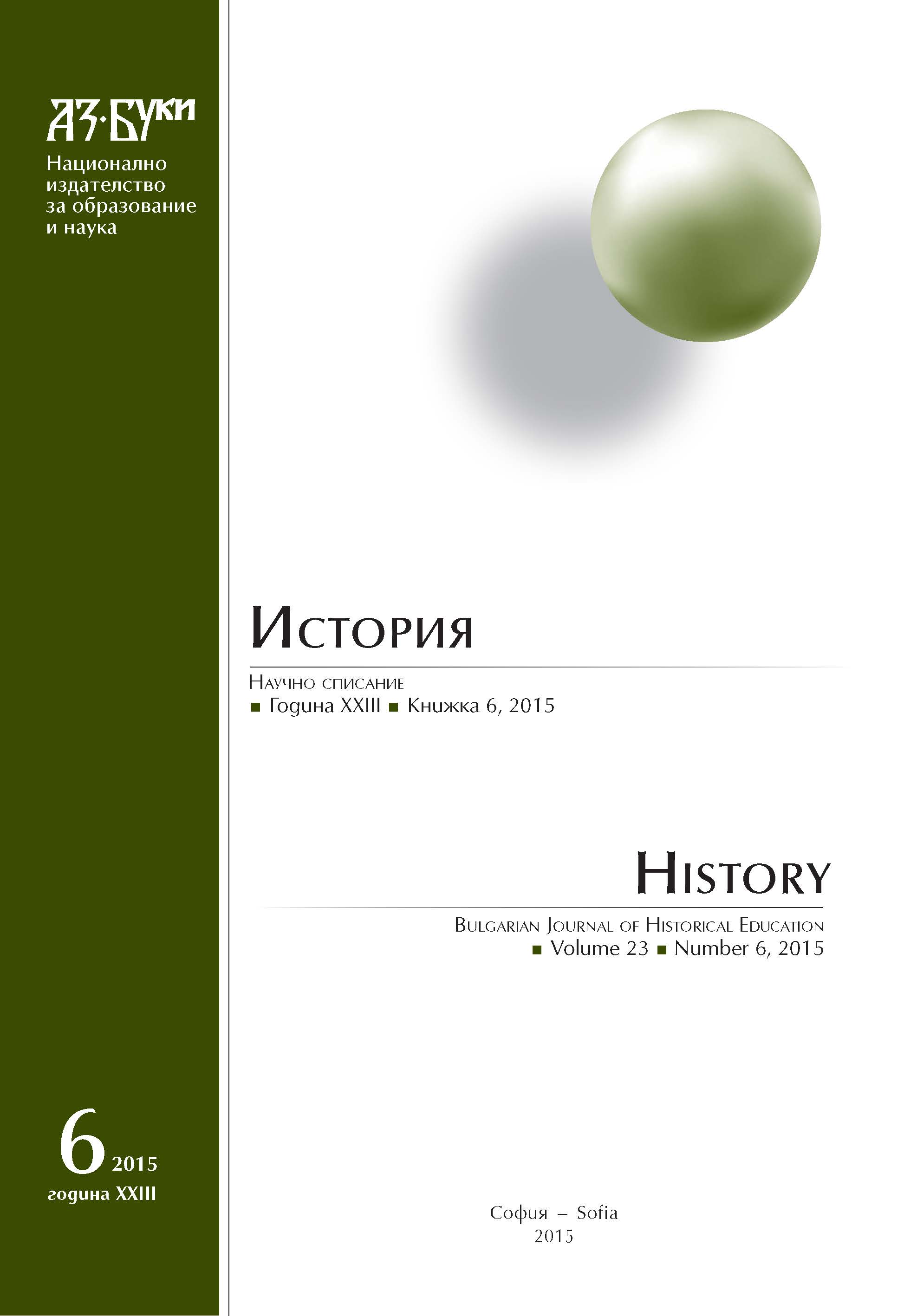
We kindly inform you that, as long as the subject affiliation of our 300.000+ articles is in progress, you might get unsufficient or no results on your third level or second level search. In this case, please broaden your search criteria.


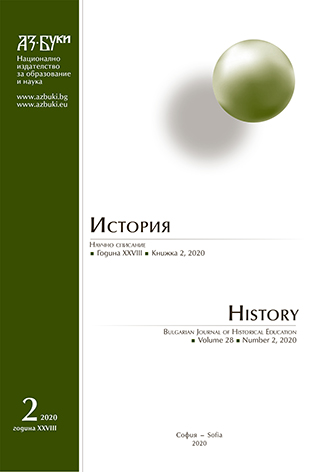
The article presents for the first time theoretical argumentation for the periodization of Bulgarian medieval history. The attempts for such periodization, which are reflected in the content and structure of the summarized scientific publications on the history of medieval Bulgaria from the end of the 19th century to the present day, are reviewed. It has to be concluded that state-political history is a dominant marker. The lower boundary of the Bulgarian medieval history goes back to the time from the earliest history of the Bulgarians and Slavs before the Great Migration of the Peoples, and the upper boundary is the end of the XVII century. In conclusion, the Bulgarian medieval history can be divided in three main periods: Early, High and Late Middle ages.
More...
An attempt to throw light on the early history of Adzhar village,today’s Svezhen, based mainly on four unpublished Ottoman tax registers, is made in the article. The author claims that the earliest documents discovered so far about the existence of Adzhar as a settlement date from the first decades of the XVII century. The village was first mentioned on the pages of an abridged avarız-register from the years 1621 – 1622. Data about the presence of large summer pastures and sheepfolds in the region of Sarnena Sredna Gora Mountain as early as the 16th century show that the foundation of the village can be related to the good conditions for livestock breeding of a peaceful place in the depths of the mountain. It is very likely that part of the inhabitants of Adzhar had been dzheleps, who bred sheep and other cattle for the food needs of the big cities, the army and the Sultan’s Palace. Asa result, raw materials including sheep wool and sheepskins led to the development of a number of crafts.The Orthodox Bulgarian population of Adzhar grew rapidly. Due to the demographic and economic development, a significant literary centre was created there for transcribing and illustrating liturgical books. A church with two priests was built in the village. There is information that in the second half of the 17th century sheep-breeding, crafts such as goat hair processing (mutafcılık) and tailoring, as well as trade and transportation of goods (in exchange of payment – kiracılık)developed in Adzhar.
More...
Тhe article presents an exploration of the “life” of one of the 20th century's symbolic symphonic works in Bulgarian musical culture – composer Petko Staynov’s “Thracian Dances” suite. The starting point of this study is research into some of the archival documents related to the work’s first performance in 1927. The next stage goes through the analysis of the piece’s presence in textbooks from the last third of the last century to the adoption of the Law on Pre-school and School Education. The final stage of this study is focused on the presence of the work and the educational context it is linked to in some of the contemporary Bulgarian textbooks.
More...
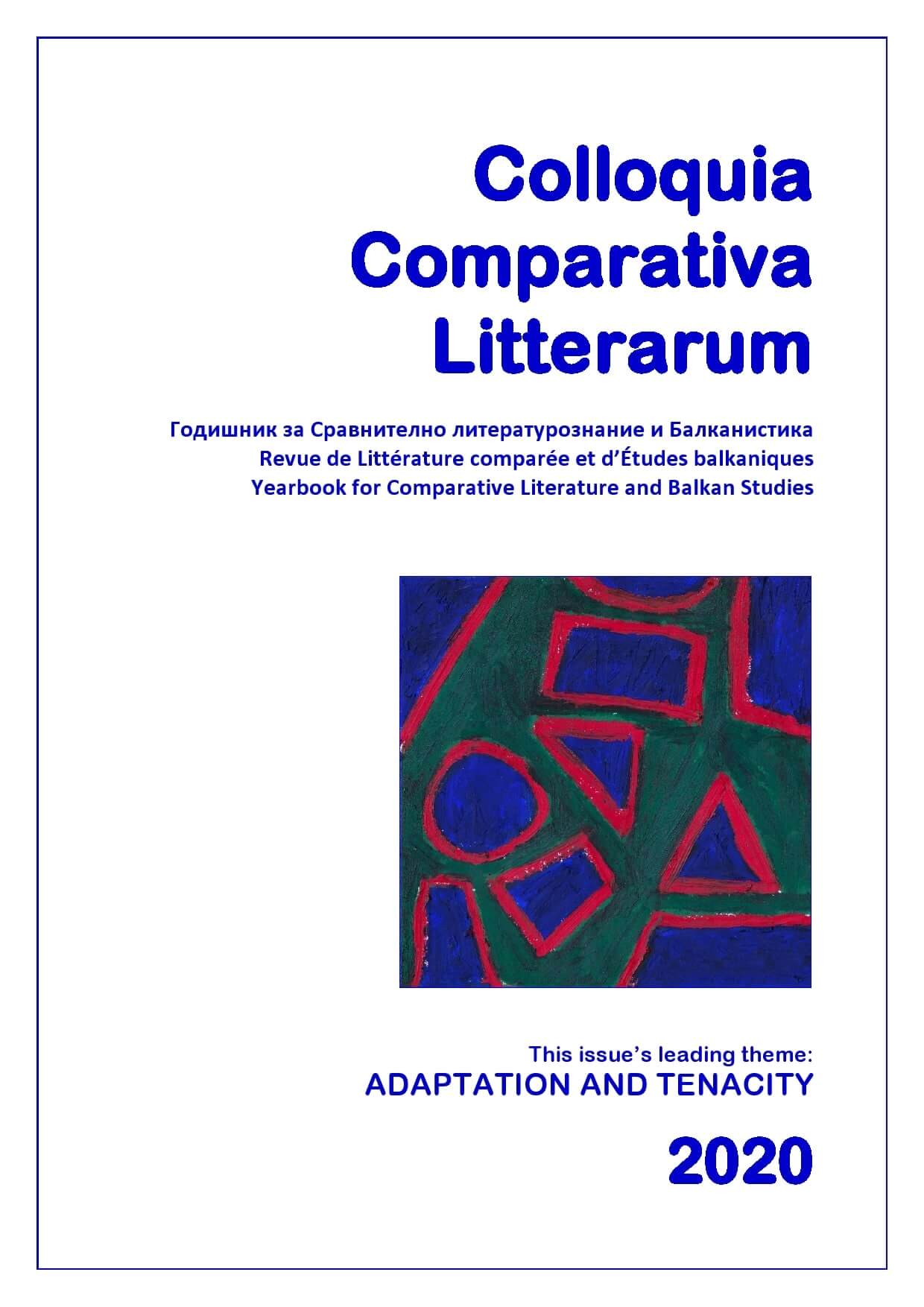
In the Western European novel, the death of the nobleness of the soul brings to life the “social realism” characteristic of Balzac’s work. This change is signified by the transformation of the novel’s protagonist from a moral into a social individual (S. Hadzhikosev). Later, this development will logically progress into the ascension of the antihero and conclude with the “cynical realism” (“réalisme cynique”), preached by authors like Frédéric Beigbeder. Reflecting on several major novels written in the 19th and 20th centuries, this article strives to answer the principal question of whether the novelist could take another realistic path, and tries to imagine what this path would look like.
More...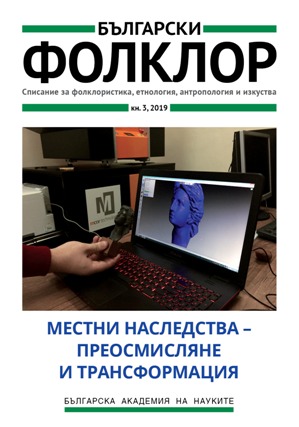
The text presents the incorporation in public activities and research paradigms of Russe museum related to the European cultural route “The Roman Emperors and Danube Wine Route”, which turns to be a catalyst of the change in the way of presentation and sharing of heritage in the region. The observations are focused on the historical reconstruction “Roman market” establishing itself as a festival with a focus on pre-modern food. The author follows the images of the Roman fortress, the variants of museum pedagogics, the digitalization and the 3D printing of artefacts, which certify the narration about the past throughout their testimony.The local feasts strengthen local memory and unite communities. They also build social and cultural ties to the place where they regularly happen.The cultural route is important for the processes, which the Rousse museum tries to guide while searching to form of knowledge and compassion on the themes connected to local heritage.
More...
Book review: Maria Bucur. Gendering Modernism. A Historical Reappraising of the Canon.
More...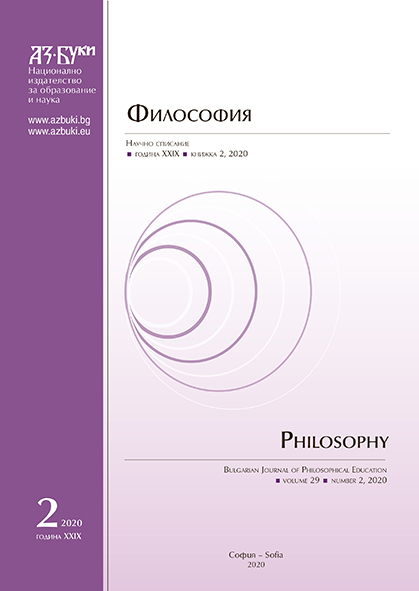
The article analyzes the gender and existential dimensions of man in the age of globalization and their reflection in philosophical education. Philosophical education aims to actualize criticality, creativity, humanism – a philosophical worldview that becomes a counteraction to any consciousness manipulation. It is proved that philosophical education in a democratic society is always a science – teaching and mastering philosophical knowledge is necessarily supplemented by philosophical creativity. The answer to the challenges of gender innovation and transhumanism is, above all, teaching and research in the field of philosophical anthropology, which becomes a meta-anthropology and promotes the concepts of gender partnership and androgynism.
More...
The paper investigates the pedagogical views of two distinguished bishops from the most recent history of the Bulgarian Church – Metropolitan Methodius Kusev and Metropolitan Boris Nevrokopski. On the basis of comparative analysis the important moments of their Church ministry have been traced, as well as life in the background of the age in which they lived as factors that influenced their pedagogical views. The two bishops identify three important factors in the educational process: faith, family and school. According to them, the influence of materialistic views in the educational process leads to the destruction of the Bulgarian school and society, as a result of which the school only educates without bringing up.
More...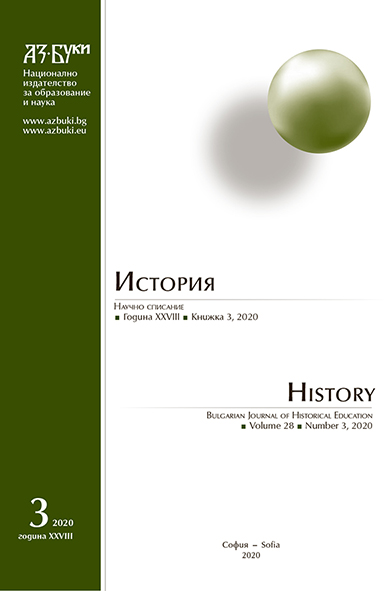
The article dwells into the ideological development and evolution of the Balkan policies of Adam Czartoryski’s Hôtel Lambert – one of the Polish political camps in exile, represented by the conservative-liberal and monarchic ideas. The geopolitical changes in Europe at the end of 1830’s forced Czartoryski and his émigré camp in Paris to shift their political concepts. As a culmination of that new course, Hôtel Lambert established a permanent Eastern Agency in the Ottoman capital, which was headed by the Polish agent Michał Czajkowski. And it is no coincidence, since after the second Ottoman Egyptian Crisis the East was no doubtfully established as a focal geopolitical point.
More...
The article traces the Ottoman urban toponymy and Turkish language influence over the street names in Plovdiv. This heritage is evident from the all periods of the contemporary Bulgarian history till the present. The Turkish local names are widely accepted in contemporary Bulgarian language and space mentality.
More...
The article describes the community of victims of the Katyn massacre, executed pursuant to the decision of the BP KC WKP (b) of 5 March 1940 The camp list was dominated by military and police officers and the prisons list was mostly civilian prisoners. The most important elaborations of the collective lists of victims were presented and also selected parts of the community were described, among others, in terms of profession or origin from a specific area of Poland. The author presented the state of research regarding the national composition of the community, and after having compared the information with Soviet documents, presented his view of the problem. The article emphasized that most of the victims of the 1940 murders were officers of the Polish Army and officers of the State Police and members of smaller uniformed formations. The fact that they belonged to these groups was determined as sufficient criterion qualifying them for extermination. The author provided statistics on the number of victims from individual uniformed formations and put forward the demand for further research regarding the various groups of those killed. Finally, he outlined a group portrait of the victims of the 1940 crimes, in terms of the most important criteria from the point of view of the Soviet authorities and historical sociology. In conclusion, it was found that the collective profile of the victims of the Katyn massacre were strongly defined by two distinctive features:service to the Polish state and attachment to Polish character.
More...
Understanding the socio-cultural significance of the experience of the past in solving the problems of the present causes a growing interest in historical education and focuses on finding effective methodological approaches to translating knowledge about the past through education. One such approach is an intersubjective approach. The paper deals with the humanistic potential of an intersubjective approach to understanding the Other and fostering the ability to compromise through historical education. A well-considered attitude towards the Other, an inner interest and understanding of the significance of the other presence implies that in the social deprivation of hostility, the inadmissibility of domination and oppression in my Self of the world of the Other Being will be deprived. Both are understood as correlates of intersubjective constitution of reality. In dialogue interaction Otherness is not subordinated, it is assigned to my Self, it remains an “insoluble” individuality. Content analysis of history books of Ukraine has shown that they are conceptually sustained, lacking stereotyped and impartial assessments of the racial, ethnic, cultural nature of the Other. However, ambiguous historical events involving different peoples and states are not alternatively presented. The narrative in the textbook undoubtedly should be the Ukrainian ethnic group as the core of national history. At the same time, using the anthropological and territorial principles as the core of the story, the textbook should strive for Ukraine to be perceived as space where other ethnic communities whose existence is an integral part of Ukrainian history reside alongside Ukrainians. Relevant in overcoming the false image of historical education is the development of the ability to think critically about historical facts, to give them their own judgment. Understanding of the historical process from the point of view of an intersubjective approach will contribute to the formation of a person’s tendency to cultural tolerance, tolerance and dialogue with the Other, the realization that the Other is also entitled to a mistake or his own ratio, the ability to see the world in all its diversity and uniqueness.
More...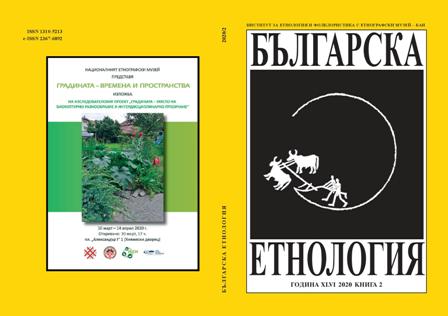
The marital partners in mixed families engage in a form of cultural transition as a result of negotiating the differences between them. This leads to the development of a new cultural model which is influenced by or even combines both partners’heritages. An important aspect of this intercultural interaction is the festivities, more particularly the manner of their functioning, especially within bi-religious families. Hence, the festive events appear to form an essential and very visible part of each partner's own cultural heritage, which the couple more or less incorporate into their mixed family’s life. This article focuses on several ethnocultural (including religious), as well as social aspects of the festivities of couples composed by Bulgarians and foreigners of the Middle East and North African countries. The text considers the place of the festivities in the lifestyle of the partners and their children, as well as the agents’attitudes, personal motivations and involvement in certain activities.
More...
This paper draws on the author’s ethnographic research with 11 – 15 years old adolescents conducted in a “prioriy” middle school in Normandy, France (2014 – 2017) and aims to explore these immigrant students’ experiences of acculturation, sociocultural adaptation and identity formation. In particular, I present the case study of a Moroccan boy in an attempt to uncover more profound aspects of these phenomena. I use the theoretical framework of Berry et al. (2006) regarding strategies for acculturation and identity processes in adolescence in order to analyse data gathered through ethnographic methods. Then, I illustrate how methodological pluralism can produce a nuanced picture and allow for alternative interpretations. In addition, followingPollock and Van Reken’s example of a third-culture kid, I use the concept of a third culture adolescent (Pollock and Van Reken 1999) to demonstrate how a migrant student with a diffuse profile, that defines him as marginal and confused, viewed through an ethnographic lens, can be thought of as someone creating “third culture”.
More...
In historical ethnology, women’s servants is a social phenomenon related to the so-called “West European” family model characterized by late matrimony. In Bulgaria, under the influence of socio-economic factors in the country and the modernization of the Bulgarian society in the first half of 20th century, the servantship developed and became very popular in the decades after World War I. In the next decades, it underwent numerous changes which led to slow but steady turn in the understanding of it. The study of its development and the outlining of the different stages with their age and gender characteristics allow us to trace the changes in the Bulgarian society in the previous century. It is also important to outline the regional characteristics which show important specifics of the existence and development of women’s servantship. Because of its strong influence over the life of different social groups in the society and its transformation into a vehicle of cultural exchange between them, the servantship could be defined also as a social mediator. It creates a peculiar bridge between the village and the city and facilitates the penetration of the new West European culture and urban patterns in the small local village community. The changes in the attitudes towards servantship as well as its popularity give us important information about the society as a whole and allow tracing the changes in the matrimonial models. The article is dedicated to the labour mobility of the young girls from the Tuzlukregion (Municipality of Antonovo, District of Targovishte) which expands in the course of time and to their hiring as housemaids mainly in the capital of Sofia. The study is based on the narratives of local people gathered during two short fieldworkresearches in the Municipality of Antonovo.
More...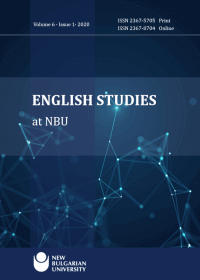
The greatly examined story of A Lost Lady usually depicts Mrs. Forrester’s success in meeting and adapting to the challenges of a changing world, a world characterized by materialism and self-fulfilment. However, the overlooked story, one far more disturbing than the privileged story in the text, is the narrative of oppressed groups of people of other races and the lower class. Drawing on some aspects of postcolonial theory, this paper explores Willa Cather’s own reactions to real changes in her society, to the waning power of imperialism, and of her nostalgic longing for the western prairies of her youth, without showing any sympathy for the dispossessed Native Americans and other oppressed races. It will also disclose the unmistakable colonial overtones, which remarkably resonate with the common discourse of “Manifest Destiny” during the time period of American expansion to the Wild West.
More...
This paper discusses the politics and multi-functionality of storytelling in Diana Abu-Jaber’s novel Crescent (2003). I argue that the strategic use of storytelling places Crescent as a complex hybrid text that projects the nature, and development, of Arab American literature in the contemporary era. In addition to having the practice of storytelling as an apparatus to project identity in Crescent, Abu-Jaber reappropriates its empowered status in Arab culture as well as politicizes its image in the mind of her readers. Besides employing critical and analytical approaches to the novel, this paper relies on arguments and perspectives of prominent postcolonial and literary critics and theorists such as Edward Said, Suzanne Keen, Walter Benjamin, and Samaya Sami Sabry, to name a few.
More...